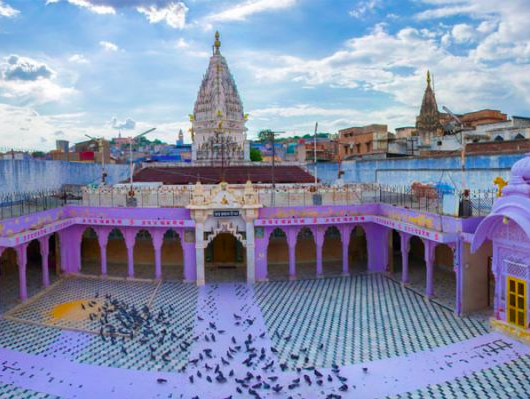India is a country in South Asia, bordered by Pakistan, China, Nepal, Bhutan, Bangladesh, Myanmar, The Arabian Sea, Bay of Bengal and the Indian Ocean.
Population estimate (2018): 1,360,792,118
Capital City: New Delhi
Currency used: Indian Rupee
Gross National Income per capita (2013) (PPP international $): 5
Time zone: UTC + 5:30
Population growth rate (2018): 1.11%
Total fertility rate per woman: 2.5
Languages: Hindi, English, Bengali, Telugu, Marathi, Tamil, Urdu.
Key ethnic groups: Indo-Ayan 72%, Dravidian 25%, Mongoloid and other 3%.
Religion: Hindu 79.8%, Muslim 14.2%, Christian 2.3%, Sikh 1.7%, other or unspecified 2%.
Literacy: 71.2%
Climate: The climate in India is very diverse, ranging from temperate and alpine in the mountainous north to tropical in the south. Generally the eastern part of India and the west coast are hot and tropical and dry in winter. The southern tip has a hot, tropical rainforest climate with monsoon rains. North west and central India have a dry climate with temperatures above 18ºc throughout the year. The northern mountainous regions have a temperate and humid climate with temperatures dropping below 5ºc in winter. The summer in India is generally from April to October, after which the monsoon rains usually start. June is the hottest month where temperatures can reach 45ºc in some regions. The monsoon rains may also hit the country during this period.
Healthcare system
The public healthcare system has a three-tier structure comprising primary, secondary and tertiary facilities. In rural areas primary health care consists of community health centres, primary health centres and a network of sub-centres. Sub-centres are the first point of contact for the community. They deal with child and maternal health, disease control and health counselling. The primary health centres serve as referral units for the sub-centres, providing for 20,000 – 30,000 people. Community Health Centres are managed by state governments, they cover between 80,000 and 120,000 people. They are required to have four medical specialists, 21 supporting/paramedical staff, 30 beds, a laboratory and x-ray. Community Health Centres or District Hospitals are declared fully operational First Referral Units if they are equipped to provide 24 hour emergency obstetric and newborn care, and 24 hour blood storage facilities.
In principle, all services at public hospitals are free to the country’s citizens, however in practice, there is a significant shortage of staff and supplies, which limits access to care and forces many to attend the more expensive private facilities. These costs are often detrimental to the economy of many families. Furthermore, there are severe inequalities in access to healthcare and outcomes between the various states, rural and urban areas, socioeconomic groups, castes, and genders.
The private health sector in India is not well regulated, and therefore the standard of private facilities can vary a lot depending on funds and location. Some private hospitals offer standards comparable to that of Europe/North America/Australia in terms of equipment, facilities and staff qualifications. The private hospital sector has grown substantially over the past 20 years; currently they provide approximately 80% of outpatient care and 60% of inpatient care in the country.
Generally speaking, physicians working in the private sector are better paid than those working in government facilities. In most states, government-employed physicians are not allowed to work simultaneously in private practice.
Health statistics:
Life expectancy at birth (2016): 67/70 (male/female)
Probability of dying between 15 and 60 years: 214/138 (per 1000 population, 2016)
Total expenditure on health per capita (2014): $267
Number of doctors per 1000 population (2014): 0.725
Nursing and midwifery personnel density (per 1000 population, 2013): 2.049
Neonatal mortality rate (per 1000 live births, 2016): 25.4 [22.6-28.4]
Maternal mortality ratio (per 100.000 live births, 2015): 174 [139-217]
Births attended by skilled health personnel (2013): 81.1%
Top 10 causes of death (2012):
Ischaemic heart disease: 1215.4 thousand people / 12.4% of total
Chronic obstructive pulmonary disease: 1061.9 / 10.8%
Stroke: 881.7 / 9%
Diarrhoeal diseases: 586.6 / 6%
Lower respiratory infections: 481.5 / 4.9%
Preterm birth complications: 380.9 / 3.9%
Tuberculosis: 269.9 / 2.7%
Self-harm: 258.1 / 2.6%
Falls: 254.2 / 2.6%
Road Injury: 233.1 / 2.4%
Distribution of causes of deaths in children under 5 (2013):
Prematurity: 27% of total
Other causes: 15%
Acute respiratory infections: 13%
Birth asphyxia: 11%
Diarrhoea: 10%
Neonatal sepsis: 8%
Congenital anomalies: 7%
Injuries: 4%
Measles: 3%
Malaria: 1%
HIV/AIDS: <1%




